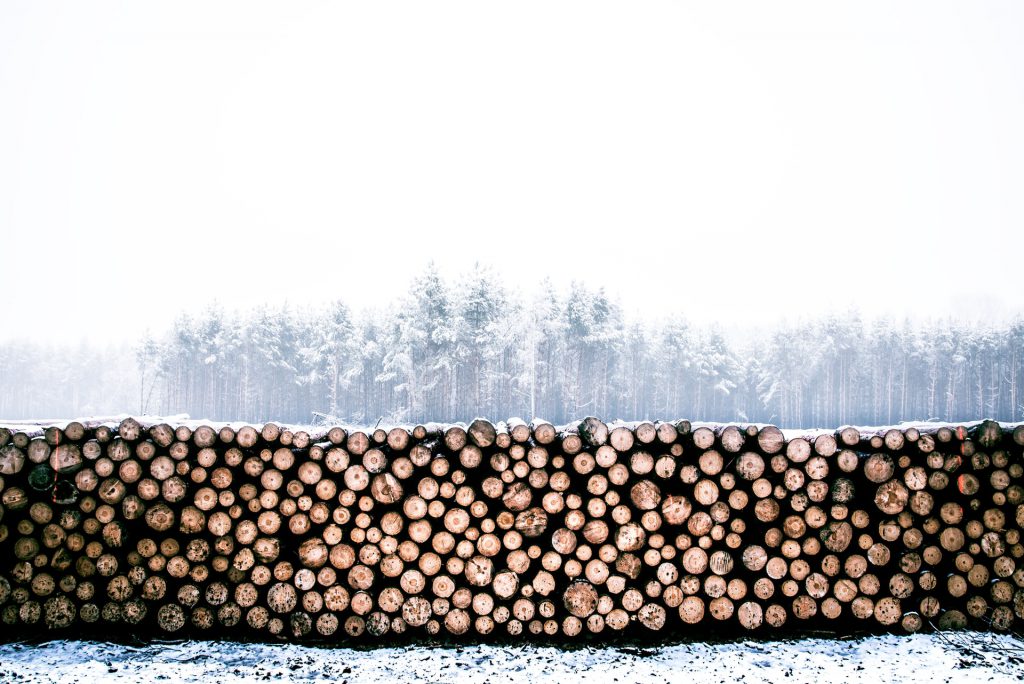
The Yule Log traditionally was a large wooden log burnt at Christmas, often over the Twelve Days of Christmas. The word Yule comes from the Norse for ‘Yul’ or ‘Jul’. The origins of the Yule log could possibly come from the ancient Egyptians, who would burn a large log for their sun God, Horus, about 5,000BC. The Romans from 68BC burnt a log for their adopted Persian sun god, Mithras. The log would burn for 10 nights, so to usher in his strength.
The Yule Log, Druids and the Norse
But the Yule Log is more associated with the Druids and the Norse of Northern Europe and their celebrations based around the Winter Solstice. Similar to the Romans, the burning of the Yule log at Yuletide was to help usher in the power of the sun. This was the pagan festival of fire or Fionn’s Day. Traditionally the Druids would have burnt an oak log. The oak was scared to the Druids and the burning of an oak log symbolised life, whilst pine would have been death. The log would have been decorated probably in holly and pinecones or anointed, some scholars believe with evergreens, holly, salt and wine. The ashes from the log were believed to have medical properties and would have been used to cure swollen glands, plant rust and animal complaints, as well as protection from lightening and evil. A piece of the log would be kept to light the following years log.
In Scandinavia, the Winter festival was to honour Jolnir/Odin. He was the god of ecstasy and intoxicating drink. A sacrificial beer was made to honour him, that would be blessed and this became to be known as ‘drinking Yule’ according to some scholars. Other scholars believe that in Scandinavia the Yule log was also associated with a fertility god and log was a representative of a phallic god, probably Freyr.
The Saxons and Visigoths (from Germany) during their Winter Solstice would also burn a log which symbolised good verses evil.
The First Mention of the Yule Log
The first mention of Christians burning a log is in the 4th Century, at the Feast of Lights, what would later become Christmas. Most likely taken from the Romans, it was symbolic for the birth of Jesus, as the light of the world from the darkness of winter.
By Norman times the burning of the log had come to symbolise Jesus’ triumph over sin and Christian’s vision of good over evil. By 1340, Queens College, Oxford combined the Norman celebration of the Yule Log Festival, along with song. This was then adapted by the manor houses of England for the Christmas season
Not much is known about the Yule Log in Britain, in fact there are few records although a clergyman, Robert Herrick writes about the ‘Christmas Log’ in the 17th Century. Henry Bourne in the 1720’s mentions the practice in the Tyne valley and claims it as a pagan ritual. Robert Chambers in his book of 1832, Book of Day likewise puts it down as a pagan practice. There is little mention if any of it being apart of the Christian festival that is Christmas, during the 17th Century and onwards.
On continental Europe, there is more of a connection with Christmas Log as a Christian symbol. In countries like Spain, particularly in Catalonia, Serbia, Croatia and Bulgaria, the Yule log is brought in on Christmas Eve. In Serbian homes it is a central feature of Christmas celebrations, and as with the Druids, it is oak that is traditionally burnt. The log is traditionally burnt through Christmas Day.
The Modern Yule Log
Today thought the Yule Log is more associated with a French dessert, Bûche de Noël. It is unclear when it first became popular, but it is likely to have been towards the end of the 18th Century or possibly early 19th. It is now a log shaped chocolate cake, usually covered in icing sugar to represent snow.
The Yule Log has different names across Europe;
Bulgaria – Budnik
Croatia – Badnjak
England – Yule Log
France – Bûche de Noël (Christmas Log)
Ireland – Bloc na Nollaig (the Christmas Block)
Italy – Festa di Ceppo (Festival of the Log)
Scotland – Yeel Carline (The Christmas Old Wife)
Serbia – Badnjak
Spain (Catalonia) – Tió de Nadal (Christmas Log)
Wales – Y Bloccyn Gwylian (The Festival Block).